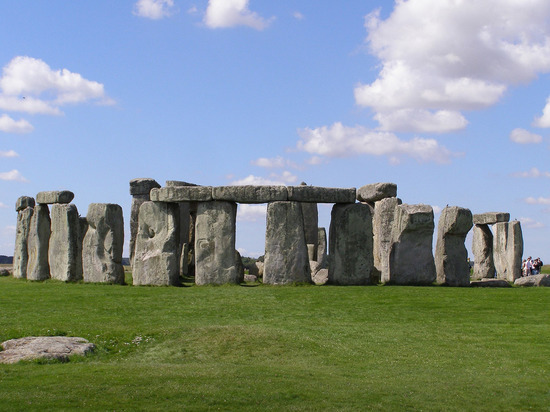Stonehenge rival found in Spain: 500 ancient standing stones
[ad_1]

The find of archaeologists struck the imagination of scientists
The famous British Stonehenge seems to have a new “competitor” on the European continent. A huge megalithic complex of more than 500 standing stones has been discovered in Spain. Archaeologists believe that the prehistoric site in the province of Huelva may be one of the largest of its kind in Europe.
A huge megalithic complex of more than 500 standing stones has been discovered in southern Spain, archaeologists say, which could be one of the largest in Europe.
As writes The Guardian, the stones were discovered on a piece of land in Huelva, a province adjacent to the southernmost part of Spain’s border with Portugal, near the Guadiana River. The land of about 600 hectares was intended for an avocado plantation. Before issuing a permit, the regional authorities requested a study in light of the site’s possible archaeological significance. Examination revealed the presence of stones.
“This is the largest and most diverse collection of standing stones grouped together in the Iberian Peninsula,” says José Antonio Linares, a University of Huelva researcher and one of the three project leaders. Probably the oldest standing stones at the site of La Torre-La Janera were erected in the second half of the sixth or fifth millennium BC, he said: “This is the largest megalithic monument in Europe.”
At this site, archaeologists have found a large number of different types of megaliths, including standing stones, dolmens, burial mounds, coffin stone boxes and enclosures.
“The most common find was standing stones, 526 of which are still standing or lying on the ground,” the researchers report in an article published in Trabajos de Prehistoria, a journal of prehistoric archeology. The height of the stones is from one to three meters.
There are about 3,000 standing stones at the Carnac megalithic site in northwestern France.
According to Primitiva Bueno, co-director of the project and professor at the University of Alcala near Madrid, one of the most striking moments was the discovery of such a variety of megalithic elements clustered together in one place, and how well they were preserved.
“Finding alignments and dolmens in the same area is not very common. Here you will find everything together – rows, cromlechs and dolmens – and it’s very amazing,” she said, emphasizing the “excellent preservation” of the place.
A cromlech is a stone circle, while a dolmen is a type of megalithic tomb, usually consisting of two or more standing stones with a large, flat capstone on top.
According to the researchers, most of the menhirs were grouped into 26 rows and two cromlechs, both located on hilltops with a clear view to the east to watch the sunrise during the summer and winter solstices, as well as on the days of the spring and autumn equinoxes.
Many stones are buried deep in the ground. They will need to be carefully excavated. It is planned that the work will last until 2026.
[ad_2]
Source link








